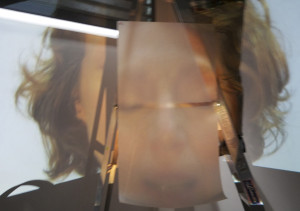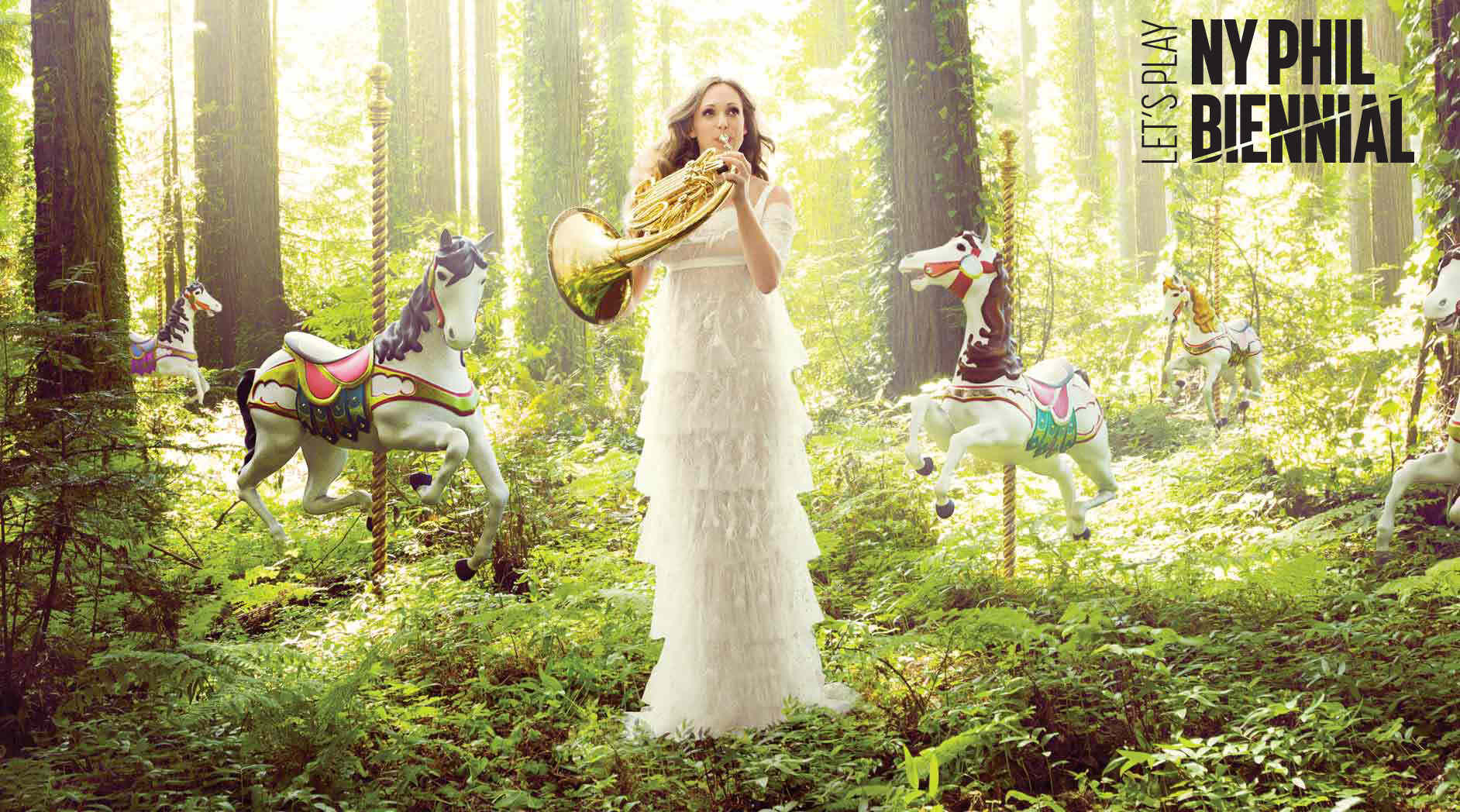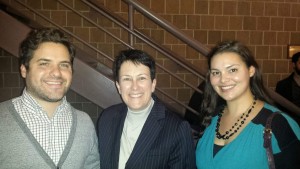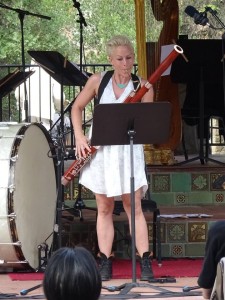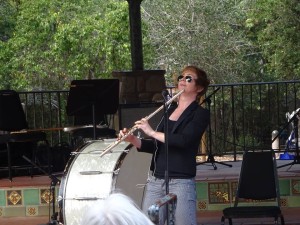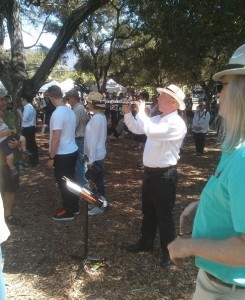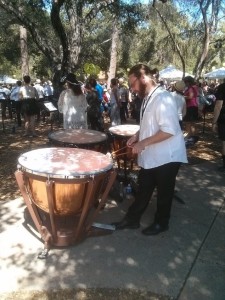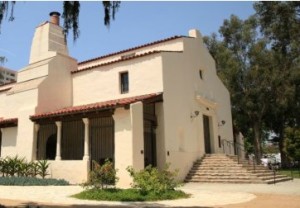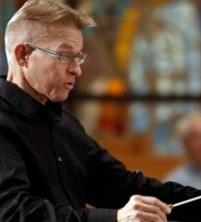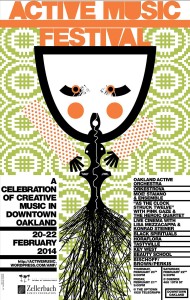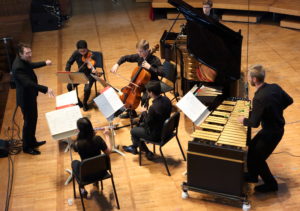
The Sunday concert at Tanglewood’s Festival of Contemporary Music is always something of a marathon. It starts at 10 AM and is chock full of offerings that usually challenge the ear as much as tantalize it. The Sunday concert has traditionally also been the one that tests the capacities of the TMC Fellows most thoroughly. This year was no exception, although it was a horse race between Sunday’s chamber music concert and Monday’s presentation of Messiaen’s formidable Turungalila-Symphonie, a work that vibrated and thundered with intensity, shaped with eminently detailed care by conductor Stefan Asbury.
Ander’s Hillborg’s Brass Quintet is one of his most often played pieces, and one can readily hear why. Its opening antiphonally spiralling textures reveal a kinship to a more recent orchestra piece, Hillborg’s Vaporized Tivoli: both make a similarly captivating impression. There is an excellent use of repeated note textures, and the bold harmonic language makes it clear he’s studied a fair bit of Copland.
Brett Dean’s Sextet (Old Kings in Exile) is a cleverly crafted Pierrot plus Percussion piece with a number of scoring touches that set it apart from the average piece in the genre. There’s the clever use of percussion, with bowed vibraphone and gongs occurring simultaneously to create a two-headed beast of an instrument. The middle movement gives a nod to Carter’s Triple Duo by splitting the ensemble into a double trio. There’s also some mid-movement scordatura that changes up the harmony and proves to be quite an impressive feat from the strings. Jonathan Harvey’s Song Offerings, settings of Tagore, featured soprano Sarah Tuttle. The piece combines several of the composer’s harmonic interests, including spectralism, microtonality, serialism, and modality. Glissandos and melismas are ably deployed to further variegate the texture.
David Fulmer has appeared at Tanglewood as a string soloist and composer. In the intervening time he has added conductor to his resume, and he did a fine job leading two pieces on Sunday’s concert. The first was Pierre Boulez’s Derive 1, one of his finest chamber pieces from the 1980s. Much shorter than his later Derive 2, seven minutes compared to nearly an hour, it is a compact utterance, but an eloquent one. Long sustained harmonic regions are parsed out again fast melodic filigrees and rapid trills. Christian Rief led Franco Donatoni’s Arpege, a piece that was originally a vibraphone piece and was later built up to a Pierrot plus Percussion Sextet. As one might expect, the vibraphone’s arpeggios lead the proceedings, in a curious amalgam of post-tonality and minimalist figuration. The ostinatos appear in almost “locked hands” scoring at first, then gradually stagger to create a lustrous shimmering from the ensemble.
Fulmer returned to the podium to conduct Harold Meltzer’s song cycle Variations on a Summer Day, settings of Wallace Stevens. The cycle has grown over time; I saw an earlier performance at Symphony Space that had, if recollection serves, around eight songs. It has since expanded to sixteen. Not only are the Variations longer, they have become more elaborate. There is a use of microtones in the winds that is quite attractive. The vocal part, here performed by the estimable Quinn Middleman, takes up far more vertical real estate, casting down into a nearly contralto register and up to high soprano notes. Middleman is billed as a mezzo soprano and her effort here was impressive, but I’m curious if subsequent performances might benefit from using two singers, a mezzo and a soprano, to better capture the distinct registers required by the songs. It is clear that Meltzer has lived with the poetry for a long time, and his settings of it are imaginative, ranging from terse utterances to attractively varied textures. Those who eschew the morning hour on Sundays at the Festival of Contemporary Music miss out.
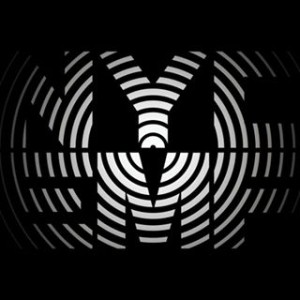 Most New Yorkers are walking about, minding their own business, completely oblivious to the international sonic earthquake vibrating through their midst all week: The New York City Electroacoustic Music Festival (NYCEMF). The first wave of the festival (seven concerts) took place as part of the New York Philharmonic’s Biennial at National Sawdust in Brooklyn last week. Yet the lion’s share of the festival is happening right now: 28 more concerts during June 13-19, at Abrons Arts Center on Grand St., for a total of 35 concerts. Yes you read that correctly: 35 concerts of electroacoustic music, including some 350 works, by almost as many composers from all around the world! Indeed a mammoth undertaking organized, produced, and presented miraculously by Hubert Howe, Travis Garrison, David Reeder, Howie Kenty, and a highly dedicated energetic staff.
Most New Yorkers are walking about, minding their own business, completely oblivious to the international sonic earthquake vibrating through their midst all week: The New York City Electroacoustic Music Festival (NYCEMF). The first wave of the festival (seven concerts) took place as part of the New York Philharmonic’s Biennial at National Sawdust in Brooklyn last week. Yet the lion’s share of the festival is happening right now: 28 more concerts during June 13-19, at Abrons Arts Center on Grand St., for a total of 35 concerts. Yes you read that correctly: 35 concerts of electroacoustic music, including some 350 works, by almost as many composers from all around the world! Indeed a mammoth undertaking organized, produced, and presented miraculously by Hubert Howe, Travis Garrison, David Reeder, Howie Kenty, and a highly dedicated energetic staff.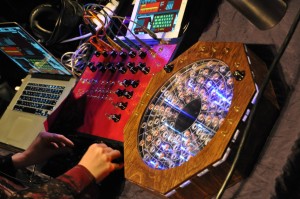

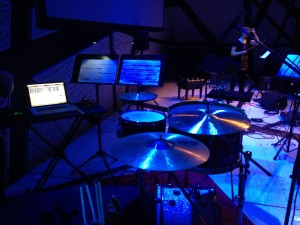 Zhaoyu Zhang’s Night Snow brought my ears close up and inside mysterious objects and intriguingly close to strange materials in action—as though my ears were intimately touching the source of the sounds, quiet sounds of brushing, crushing, caressing, burning, scraping, and feathering. Deeper sounds were felt more than heard, creating an altogether visceral experience, evoking what the ancient Chinese poet Juyi Bai’s calls the four senses: tactile (cold), visual (bright), feeling (to know), and auditory (to hear)
Zhaoyu Zhang’s Night Snow brought my ears close up and inside mysterious objects and intriguingly close to strange materials in action—as though my ears were intimately touching the source of the sounds, quiet sounds of brushing, crushing, caressing, burning, scraping, and feathering. Deeper sounds were felt more than heard, creating an altogether visceral experience, evoking what the ancient Chinese poet Juyi Bai’s calls the four senses: tactile (cold), visual (bright), feeling (to know), and auditory (to hear)
